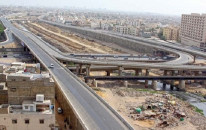India’s most interesting city
Surat wasn’t designed by outsiders, it had an urban culture developed by its citizens, much of which it retains today.

The writer is a columnist. He is also a former editor of the Mumbai-based English newspaper Mid Day and the Gujarati paper Divya Bhaskar
aakar.patel@tribune.com.pk
Pune stood second in the “quality of life” category, while Ahmedabad was placed third. This was the result of a survey, and we must discount surveys as not being an effective tool to measure quality.
However, I must add my two bits here because I am delighted with the results. To me, Surat is the most interesting city in India. It would be so even if it weren’t the place I called home for most of my life.
It was a city before Bombay and New Delhi and Madras and Calcutta and Bangalore existed. It wasn’t designed by outsiders and it had an urban culture developed by its citizens, much of which it retains today.
Surat was already a big city when, in 1608, the British first landed in India. They came hoping to trade and were given a licence to set up a warehouse (called ‘factory’) by a drug-addled Jahangir. From here, they began the adventure that climaxed two centuries later with their taking Delhi from the Marathas.
Writer Khaled Ahmed says that Surat’s importance came from it being India’s only west-facing port. It was the place from where the Mughals — who did not control the land route — and their harem departed for Hajj. But it was also always the most important city for the empire outside the capital because of its traders’ ability to generate customs revenue and bring in gold. After the English Restoration, Bombay came to the possession of Charles II as dowry and this little transaction transformed India and world history. The British held on to this little corner with zeal and would not be dislodged. The teetotaller Aurangzeb disliked Europeans but had to defer to British power because their ships controlled the passage to Makkah.
The decline of Surat as a port happened at the same time as the rise of Bombay. Some believe this was because the river Tapti silted over, its banks no longer able to berth large ships. Though the Bombay harbour was superior, however, the city was, at that point, only a collection of villages. There were no proper mercantile castes to manage British trade. And so, the British encouraged the migration of Surat’s merchants — Hindu, Muslim and Parsi — to the city, creating what is still India’s only proper urban space, South Bombay.
As Bombay rose, Surat declined, but for a short period. Regeneration is built into its genetic code. Its capacity for producing fine business minds is undiminished (Ratan Tata was born here). It is Gujarat’s only city of proper diversity, where the lower classes have street space. It is for this reason the one city where a decent meal may be easily found for those who eat meat, in what is otherwise an oppressively vegetarian state.
The Surti in caricature is for other Gujaratis, a person who enjoys the good things of life. I can testify that this caricature is true.
Ahmedabad and Baroda are India’s two most communally violent cities. Given this, it is quite remarkable that Surat should be so different from them, inclusive and for most of its history, peaceful. Why is this so? I have my theories of caste and religious inclusion, but these are not the result of academic investigation. In another country, such a city, rich with history and culture, would have been ethnographed and biographed dozens of times. Scholars and journalists would have examined its character and its contributions to transforming South Asia.
Unfortunately, that is not our way. Anyway, no point whining about that here. I left Surat in 1994 because there is little work available there unless you want to be part of a business. It has, like Ahmedabad, no significant white collar middle class even today. English is not the first language of its middle class. Those excited by this survey should have a look at these cities to know all aspects of Gujarat’s mercantile culture and the urban spaces it produces.
Personally speaking, I do not think either Surat or Ahmedabad or indeed Pune are better to live and work in than Mumbai, Delhi, Chennai or Bangalore. However, I can without embarrassment or exaggeration call Surat India’s most interesting city.
Published in The Express Tribune, April 14th, 2013.


1701351241-1/Afghan-refugees-(3)1701351241-1-208x130.webp)
















COMMENTS
Comments are moderated and generally will be posted if they are on-topic and not abusive.
For more information, please see our Comments FAQ